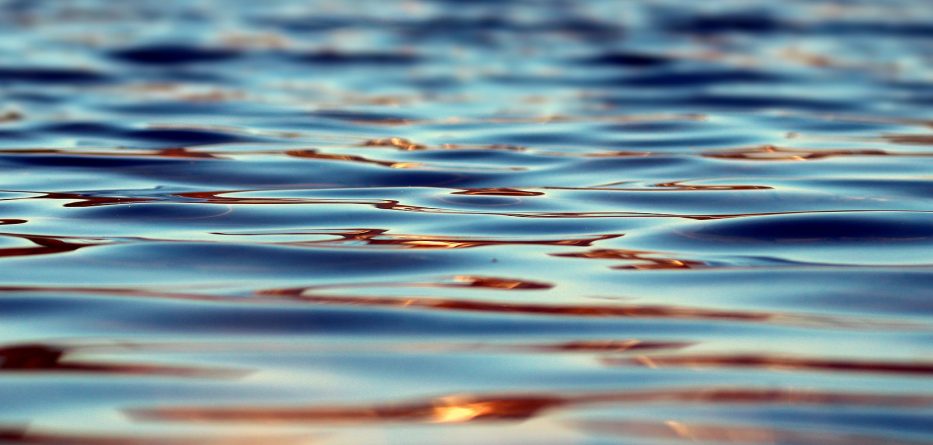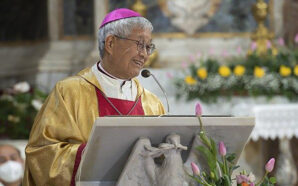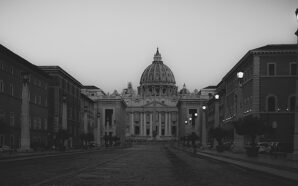At the start, I acknowledge that the sovereignty of the First Nations peoples of the continent now known as Australia was never ceded by treaty nor in any other way. I acknowledge and respect First Nations peoples’ laws and ecologically sustainable custodianship of Australia over tens of thousands of years through land and sea management practices that continue today.
Pondering on and with Sister Water in my life is part of my contemplative practice. My worldview is from Australia, the driest continent, living and working in the global north, with a coloniser heritage.
Sister Water has been formative in my early years. I grew up on the banks of Devlins Creek a tributary of the Lane Cove River in Sydney Australia. A truly blessed childhood where being in nature was encouraged. Becoming an environmental educator with an ecological vocation to care for our common home is not surprising. My current work title, ‘Reconciliation with Creation’ project officer, often prompts me to reflect on what reconciliation with creation or nature could look like in our world today. I am realising this reconciliation requires active listening to the cry of the poor, the First Nations communities around me, to ensure reconciliation with creation can be realised.
World Water Day March 22, 2020, the Dicastery for Promoting Integral Human Development released the publication ‘Aqua fons vitae. Orientations on Water’. Water has been used as a symbol of the cry of the poor and the cry of the Earth. This document builds our toolkit to better listen to Sister Water. For me the wisdom in Aqua fons Vitae (AV §15) ‘that water related problems, which are complex and often interconnected, are due to the absence of just and adequate relationships with God, with nature and with oneself…. They must be addressed deeply, with justice, determination, solidarity and subsidiarity’ this speaks to us all. A call to be doers of the Word not just listeners’.
Laudato Si’ calls us to be integral with nature. It says, ‘Human life is grounded in three fundamental and closely intertwined relationships: with God, with our neighbour and with the earth itself. According to the Bible, these three vital relationships have been broken, both outwardly and within us. This rupture is sin” (§ 66).
To work on this ‘brokenness’ we need to understand the ‘rights of nature’, reflect where they have been neglected or trampled so that we are truly living an integral life with God, with our neighbours and with Earth itself.
When I talk about the ‘rights of nature’, it is seeing our earth systems and rivers are not merely as property that can be owned but they are entities that have an independent right to exist and flourish, they just are! Laws recognising the ‘rights of nature’ change the status of natural communities and rivers to being recognised as rights-bearing entities with rights that can be enforced by people, governments, and communities.
There are a small number of examples of the ‘rights of nature’ being incorporated into government institutes around the globe and a smaller number in Australia. The most promising development in listening to Sister Water has occurred in Aotearoa New Zealand, on March 20th, 2017, the Aotearoa New Zealand government enacted legislation recognising the Whanganui River as a legal person, holding rights and responsibilities equivalent to a person.
Small steps can be seen in Australia with the creation of the 2017 Yarra River Protection act. The Yarra Riverkeepers looking after the Yarra /Birrarung River in the state of Victoria, where our Australian Jesuit Province office is located, has taken a bold step to pass legislation giving water rights to the local First Nation community. The Yarra River Protection (Wilip-gin Birrarung murron) Act 2017 is the first legislation in Australia to be co-titled in a Traditional Owner language. ‘Wilip-gin Birrarung murron’ translates as ‘keep the Birrarung alive’ in Woi-wurrung.
Woi-wurrung was used in recognition of the Traditional Owners’ custodianship of the river and their unique connection to the lands through which the river flows. It is also a Victorian and Australian first in legally identifying a large river and its corridor, as a single living and integrated natural entity for protection.
On April 27, 2021, Blue Mountains City Council in the Greater Sydney region has become the first Local Council, and the first government entity in Australia, to embed ‘‘rights of nature’’ as a keystone concept into its operational practices, planning processes and advocacy programs. This has been achieved through the work of Australian Earth Laws Alliance. The Australian Earth Laws Alliance AELA is working to create systems change, so our western societies can shift away from human centred governance to Earth-centred or “life-centred” governance. AELA is working with experts from the natural sciences, Indigenous knowledge systems, law, planning, natural resource accounting, ethics, economics and the arts, to create Earth centred governance models for bioregional ecological health in Australia.
Luke Edwards of Edmund Rice Education Australia EREA, a colleague with me on the
Catholic Religious Australia CRA Ecology Alliance committee, is looking to incorporate theAELA ‘Greenprints’ approach in their school governance systems. ‘Greenprints’ focuses on a critical question: how can we create governance systems that help human societies to live within our ecological limits and nurture the Earth community? This project has been created because while we have ‘blueprints’ to document the design of building and engineering projects, we don’t yet have effective ‘Greenprints’ for helping us construct the governance systems we need, to build Earth centred human societies that can nurture the Earth community and flourish in a post-carbon, climate changed world.
Is this something we could explore across our Jesuit communities, to have ‘Greenprints’ incorporated into our governance structures?
The newly forming Jesuit inspired Rivers above Asia and Oceania Ecclesial Network (RAOEN) seeks culture-based solutions: a strength of growing reconciliation with land and seas through faith, community, and nature. The deep connection RAOEN has to Sister Water is seen in the founding statement. The ‘River above’– the Pacific Ocean is the life, the river of Asia feeding all rivers, seasons and lives. … The welfare of the lands and peoples is bound to the welfare of the seas.
Recently in the RAOEN Synodality webinar I shared a breakout room with Makareta Tawaroa from Aotearoa New Zealand Whanganui River region. Makareta shared with me that they are working to bring back the life force of the river, its essence. Makareta is a Māori woman who takes her identity from the river.
The Australian Faith and Ecology Network FEN recently held a series of webinars called Deep Listening. One of the webinars heard from Myree Sam, a traditional owner from Saibi Island in Zenadh Kes (Torres Strait). She spoke of the thousands of generations of interconnected knowledge her people have being part of the Great Barrier Reef. Myree spoke of her desire to work with Western scientists to care for Country. While listening to Mryee the call that was heard was for each of us to renew our own spiritual connection with the natural world through our own traditions. Asking: “Is there a sense that our loss of spiritual connection to the land, sea and sky has created what is affecting the Great Barrier Reef and the Earth? How can we help people regain that connection?”
From Myree I hear the complexity of forging two worlds. In Australia this struggle of First Nations people across our land to claw back the western legal entitlements to land and water that they have held for millennia has become another wicked problem we all must acknowledge.
The complexity of our Australian water crisis is often termed “wicked” which was a term coined by a colleague Val Brown from Australian National University ANU. ANU has recently started a Water Justice Hub, a response to the need to understand our wicked water issues.
In Australia it is the Murray (Millewa/Tongala)-Darling (Barka) River system that has its
water rights most contested. The Murray River (Ngarrindjeri: Millewa, Yorta Yorta: Tongala)
is a river in south-eastern Australia. It is Australia’s longest river at 2,508 km. Its tributaries include five of the next six longest rivers of Australia (the Murrumbidgee, Darling, Lachlan, Warrego and Paroo Rivers). Together with that of the Murray, the catchments of these rivers form the Murray–Darling basin, which covers about one-seventh the area of Australia covering over a million square kilometres, an area larger than the combined size of France and Germany.
The Murray-Darling Basin has a plan, first ratified in 2012, developed by state and federal
governments coming together to manage water carefully and protect the Basin for future generations, to bring the Basin back to a healthier and sustainable level, as a whole ‘connected’ system. Many critics of the Plan say that vested interests of irrigators and communities living in the catchment have been prioritised over environmental flows and First Nation custodian rights. My previous work in sustainability working with local governments within the MIA Murrumbidgee Irrigation Area has deepened my understanding of the wickedness of water issues. Local communities fought long for no reduction in their irrigation rights. The most recent drought occurred, and it was only then that water restrictions have come into place in towns in the MIA region.
Change is hard. It was the fish kills of December 2018 and January 2019 in the Darling Barka River that made many in Australia realise Sister Water is crying out.
The rights of First Nations and the environment have not been an obvious priority in the Murray Darling Basin Water Sharing Plan. Reflecting on the wickedness of the water issues in the Murray Darling basin I do need to heed the voice of a much respected environmental scientist Richard Kingsford from University of New South Wales UNSW who once said it is a world leading plan as many river systems across the globe do not even have a plan.
Very recently August 2021 an announcement outlining a path that would, for the first time,
allow water in the Murray Millewa / Tongala River to flow for cultural purposes was announced. Finally, First Nations are being listened to and the ‘rights of nature’ are slowly being incorporated into government instruments.
The plan maps a path to securing Aboriginal water rights in Murray-Darling Basin’s
Margooya Lagoon. The plan produced by Environmental Justice Australia for the Murray and Lower Darling Rivers Indigenous Nations (MLDRIN) and the Tati Tati Wadi Wadi community, is a detailed toolkit for using water in the Murray Millewa / Tongala River for cultural purposes at Margooya Lagoon, an ancestral site, important for many ancestral beings and ancestral animals.
The Margooya Lagoon plan defines cultural flows as “water entitlements that are legally and beneficially owned by Indigenous Nations of a sufficient and adequate quantity and quality,to improve the spiritual, cultural, environmental, social and economic conditions of those Indigenous Nations”. One day it will be realised it is of benefit for us all, not just First Nations communities.
I recently visited the Darling / Barka River and camped at the Mendindee Lakes which is a bucket list activity for me. Being by the Darling / Barka river filled my soul. One very sad aspect of camping by the Darling / Barka river was to see how the lakes have been reorientated for irrigation, a system created in the 1950s. All water leaving the Menindee Lakes into the Darling / Barka River now flows through a large stormwater pipe 1200mm in diameter. Pondering on this I can hear the cry of Sister Water loudly, one of many disruptions is that fish migration up and down stream is now not possible.
We need to ponder with the rivers where we are living.
What is the dream for the river in your region?
What ‘rights of nature’ are possible?
What is the name used by First People for your local river?
Sue Martin in the Project Officer for Reconciliation with Creation in the Australian Jesuit Province.
This article was originally published in Promotio Iustitiae n. 132, which is a publication of the Social Justice and Ecology Secretariat (SJES) of the General Curia of the Society of Jesus. It is available here.








